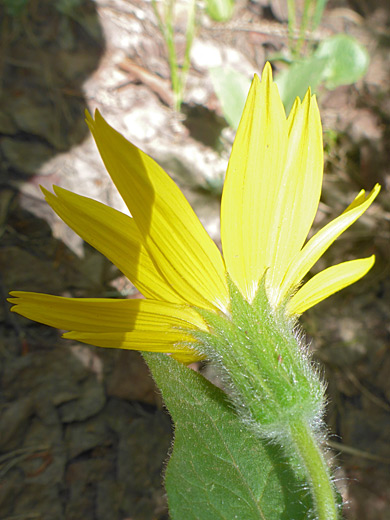
Arnica latifolia (broadleaf arnica), along the Ypsilon Lake Trail in Rocky Mountain National Park, Colorado
Common name:
Broadleaf arnica
Family:
Scientific name:
Arnica latifolia
Main flower color:
Range:
The Pacific Northwest and the Rocky Mountain states, plus north California and north Nevada
Height:
Up to 12 inches
Habitat:
Woodland, mountain meadows, moist areas
Leaves:
Opposite, ovate, with small teeth along the edges, up to 4 inches long
Season:
July to August
The leaves of arnica latifolia help distinguish this species from similar members of this genus, being broadly ovate, toothed along the edge and sparsely covered by thin, straggly hairs. Plants have two to six pairs of leaves along the stem, and between one and five flowers (occasionally up to nine). Basal leaves grow early in the season but are usually withered by flowering.
Each flower is formed of eight to 15 yellow ray florets, with two notches at the tip, and a center of between 20 and 90 tiny yellow disc florets. Underneath are eight to 20 green, equal-length phyllaries, with pointed, sometimes reddish tips, and a covering of soft, spreading hairs. The green stems are similarly hairy. The plant spreads readily, via underground stems.
Each flower is formed of eight to 15 yellow ray florets, with two notches at the tip, and a center of between 20 and 90 tiny yellow disc florets. Underneath are eight to 20 green, equal-length phyllaries, with pointed, sometimes reddish tips, and a covering of soft, spreading hairs. The green stems are similarly hairy. The plant spreads readily, via underground stems.
All Contents © Copyright The American Southwest | Comments and Questions | Contribute | Site Map




